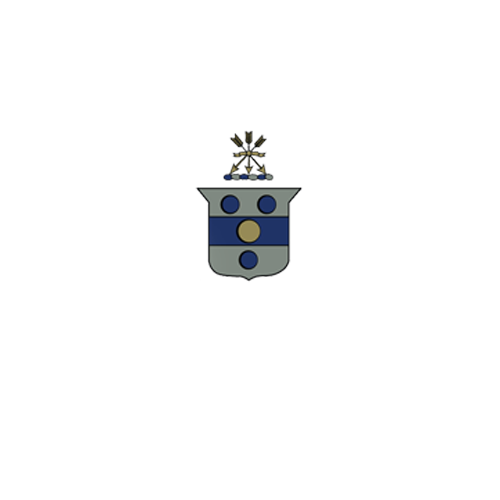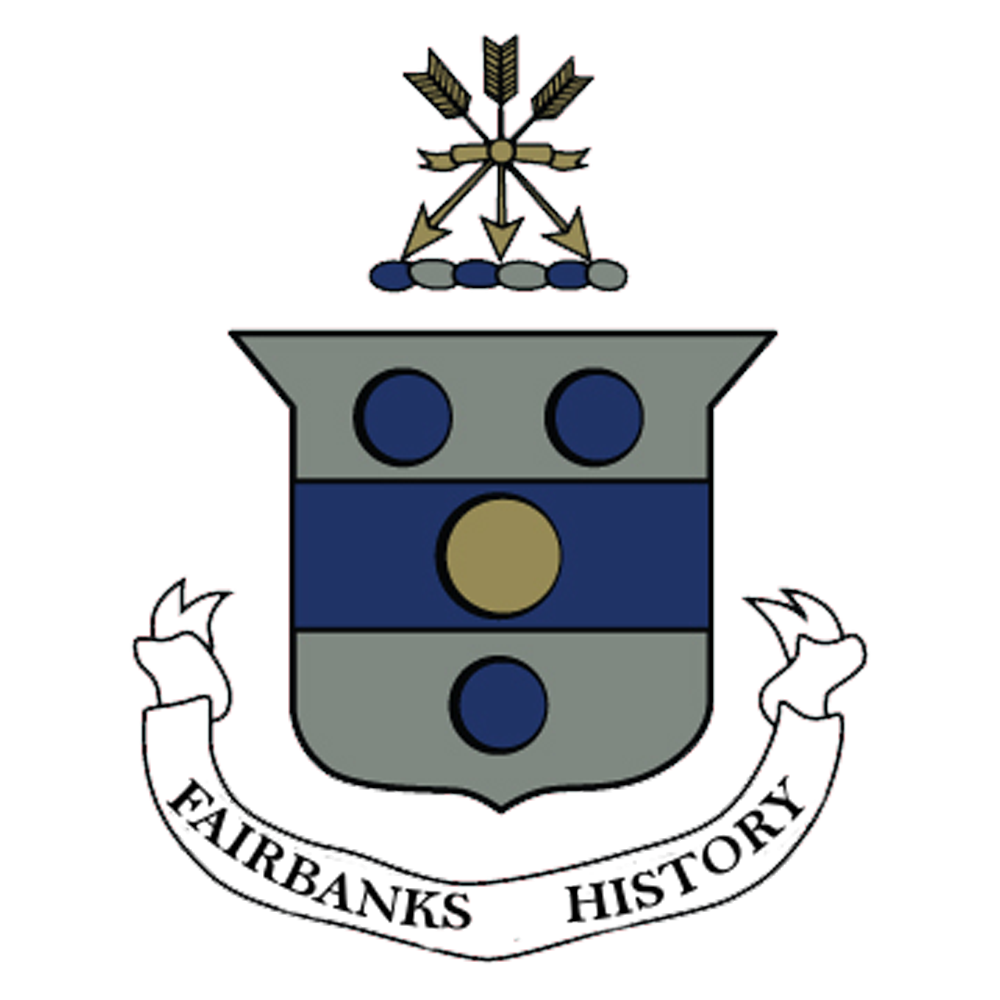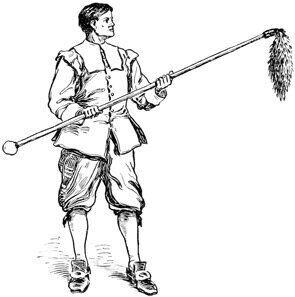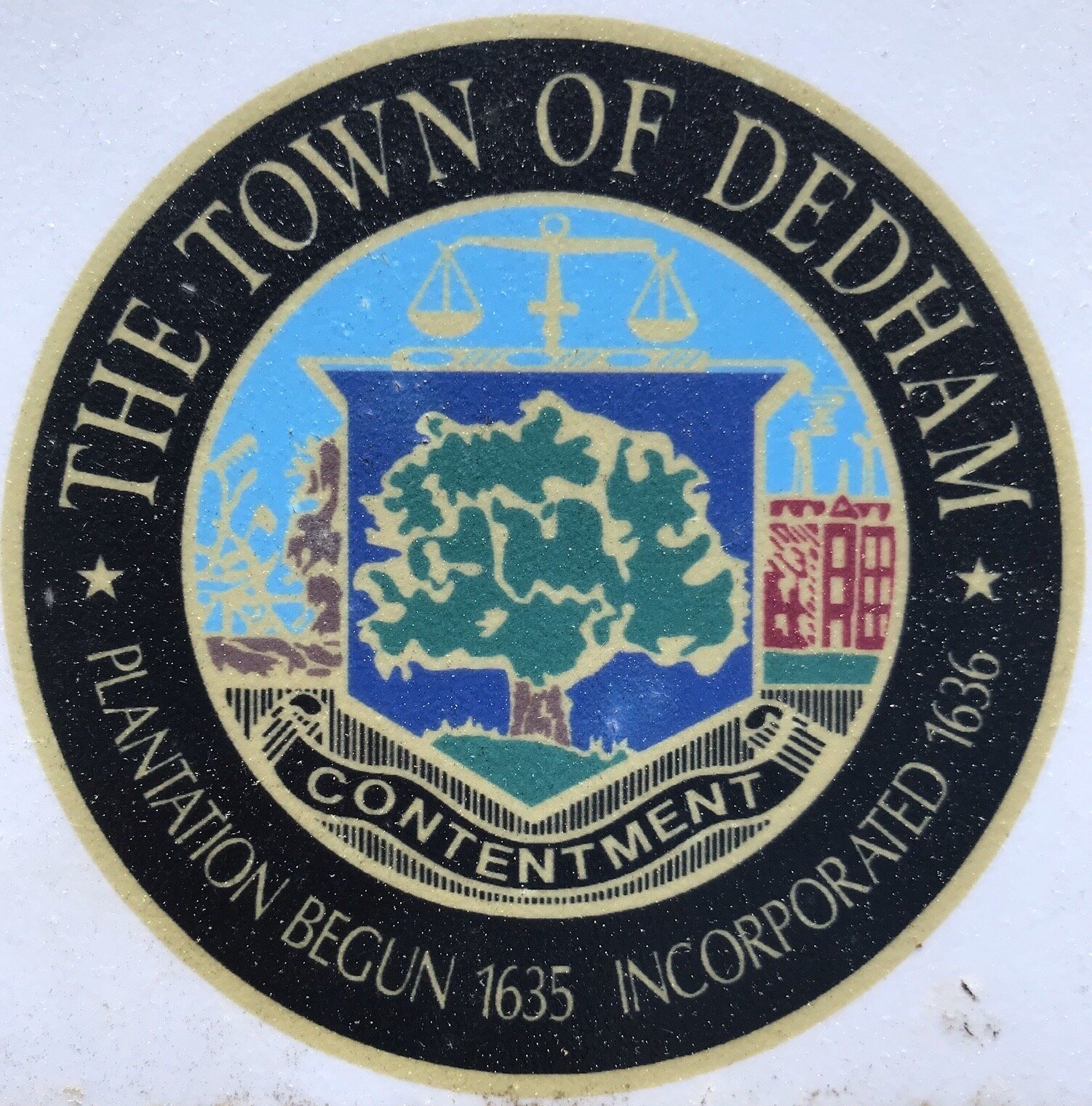Fairbanks Family Going to Church in 17th Century New England
The Call to Attend the Sabbath
The drums beat about a mile northwest of the Fairbanks house an hour after sunrise. Jonathan Fairbanks and the older sons were finishing the breakfast that Grace, Mary, and Susan warmed for them. They weren’t alarmed. They recognized the cadence of the early morning reminder that this was Sunday morning, different from the alert for danger or the rhythm for other town meetings. The family was expected at the meetinghouse for a full day of religious service later this morning. If they didn’t attend, they would be fined, even if they weren’t church members.
Ox Yoke and Saddle from Original Fairbanks Family, Found at the Fairbanks House, Dedham, Massachusetts, www.fairbankshistory.org
Grace and the girls made lunches to be eaten near the meetinghouse, perhaps at a friend’s house who lived near. They used food they prepared on Saturday to be eaten on Sunday. They were forbidden to work on Sundays, which included going into the garden or cooking. The women needn’t milk the cow, though they could on Sunday for the good of the animal. It was winter. The milk cow wouldn’t freshen until after she gave birth to the spring calf. Until then the family relied on the butter and cheeses made last season.
The men went to the barn to take care of chores, but only the ones that wouldn’t wait until Monday. They put a saddle on the ox. Grace would ride to the meetinghouse. If Jonathan decided to ride, Grace would ride pillion behind the main saddle on a skin or rug. The children and dogs trailed behind. The children, down to the smallest, looked like dwarf adults dressed in clothes cut down from adult clothes or sewn anew to appear as adult clothes.
Depiction of the first church in Dedham, Mass. They started to build in 1638. It originally had a straw roof. Found in Frank Smith’s “History of Dedham, Massachusetts”
Coming to the Meeting House
The second drum throbbed about an hour later, creating a flurry of activity so the Fairbanks and other families would arrive before the service began. Everyone lived within a mile of the meetinghouse for the convenience of attending and for protection of the town. People converged from every direction bringing their guns with them..
The Dedham church building was 30 feet long and 20 feet wide, plain and barely distinguishable from many of the one story houses. It had a few windows, perhaps of oiled paper first, but later diamond panes set in lead and collected in a frame that opened from the side. On the sides of the door, wolf ears were nailed. The were proof of the kill of a predator of the community livestock. They remained up for a long time, so they couldn’t be used over and over for the bounty they merited. On the door, there were notes and messages, particularly banns of marriage which had to appear each week for three weeks before the wedding. The banns requested any objections to the uniting from the church family.. A tall ladder leaned against the side of the church to the straw roof that was later replaced by wood shingles.
Tithingman with staff. Illustration from “Mary of Plymouth” by James Otis, published in 1910
The church wasn’t in great danger of a fire as the homes. It had no fireplace to heat the inside. Sometimes horses were tied to the ladder, until a fine was charged for that practice. The church ladder was used for fires at other homes, although each house soon was required to have a tall ladder. A spark and wind could set the whole town afire. Later shingles replaced the straw roofs, but fire remained a hazzard.
The tithing man greeted people at the heavy door, allowing them to come in, out of the cold. He held his long staff with a hard wooden ball at one end and a fox tail or feather at the other as a sign of his authority and the consequences of unbecoming behavior in church.
Seating for Sermons
Inside, the building was divided into two sides, one for the men and one for the women with an aisle between the stark wooden backless benches. The Fairbanks didn’t take the first rows, seats were assigned according to status in the community from center front to the back. The Fairbanks may have been about one-third way to the back in 1648.
The girls often sat by their mothers or on a stool in the alley. The boys were frequently seated together toward the front desk where the tithing man could monitor their behavior.
A stiff cold breeze came through the sides of the church before it was lathed and plastered by mutual work of all the town residents. There was no need for a closet or pegs for coats, because they wore their full garb against the cold. There may have been straw, lavender or rushes on the floor to help with cleanliness and odors. In Sowerby Bridge, England, their former home, every September Rushbearing was celebrated. This was a day to remove the old rushes and bringing in new. This tradition is celebrated today in Sowerby as an ancient ritual. http://calendarcustoms.com/articles/sowerby-bridge-rushbearing-festival/
Staying Warm
Foot Warmer found at The Fairbanks House, Dedham, Massachusetts, given as an engagement present in the late 1600’s
On the coldest days, the women brought their foot warmers, a metal box holding coals. Sometimes they were elaborately decorated. They could put their feet upon the box to keep them warm. Often there were skin sacks tacked to the front of the bench they slipped their feet into, perhaps the skins of the wolves that left their ears at the door. The men put their feet on their dogs that was allowed in the church as long as the canines behaved.
The Minister
The minister was the most influential and respected man in town. He was a teacher, a preacher, and often an arbitrator of small community problems. He was educated and addressed as Mister. By marriage, his wife became the most important woman in town. The only one addressed as Mistress, instead of Goodwife. The whole congregation, following the tithing-man’s announcement of the entrance of the minister and his wife, stood out of respect. The minister took a few steps up to a raised platform behind a desk or pulpit. The wife sat near the desk, perhaps on the main floor of the church. Everyone sat after the minister and his wife took their seats.
An hour-glass on the desk was used to keep the time of the sermon. It was the tithing-man’s duty to turn the hour-glass. He sat in front of the preacher, facing the congregation in a watchful position.
Fairbanks chest made by John Houghton in mid 1600’s. John Houghton made a pulpit for the Medfield Church in 1656. This chest is seen either at The Fairbanks House or Dedham Historical Society and Museum, Dedham, Massachusetts depending on the season of the year. .
The Order of Service
The first order of business was reading of wedding banns, births, and notices of those in need of prayers. Following this, they sang from the Bay Psalm-book. It was printed in 1640 at Cambridge of the Massachusetts Bay Colony, the first book printed in the New World. There were few books and no musical instruments or tuning devices at the church. The words to the songs had to be “lined off” or read line by line by someone and then sung after each line by the congregation until the song was completed. The congregation depended on one person to “tune the pitch” or to start the pitch of the song. They didn’t get to choose their leader. So sometimes the tune was in their range and sometime it was not.
Scriptures were read by the minister only if they related to his commentary in the sermon or something that happened in the community. The congregation stood during minister’s lengthy prayers as the sands continued to drain from the hour glass. No universal prayers were uttered, like the Lord’s Prayer. That smacked of England’s Archbishop Laud’s Common Book of Prayer, one of the Puritan’s point of reform. Another Psalm precluded the sermon. That was started at the turn of the hour glass. The sacrament closed the morning session, even if the sand ran out of the hour glass, which may have been turned during the service. Only accepted members of the church participated in the sacrament, but all remained until it was completed..
At the noon hour, the members were recessed to eat the meals they brought. Stiff from long sitting on bones and muscles that knew little rest except in sleep on the other six days of the week. They stretched and exited the church in an orderly fashion. The men went to check on the farm animals. The fortunate friend, older woman, or those with babies were often invited into nearby homes to warm by a fire. Others ate in the warmth and light of the meetinghouse windows or in shards of sunshine out of the wind on the leeward side of the meetinghouse. Years later, the men could go to an ordinary (house of entertainment or tavern) at noon. Scripture and religion were popular conversation anytime, but they weren’t bound by the topic at noon on the Sabbath.
Too soon for many the drum throbbed again calling them to the second portion of the day of prayer. The older boys rushed in from undetermined destinations finding it difficult to regain their composure for a second long round of sermonizing started by another song of Psalms.
Church Discipline
Most will find it understandable that the boys might from time to time need discipline. To that extent the wood knob at one end of the tithing-man’s six foot staff made a sharp rap on the offender’s head or a jab in the ribs. If multiple infractions took place the boy or boys, as one would tend to enlist another the mischief or snickering, would find themselves on the steps leading to the raised platform, to be in easy reach of the tithing-man. As hard as they may try, some could not quell the mirth provoked by watching the rest of the goings on in church. Even if it meant further punishment from their father when they returned home.
The wooden ball portion of the tithingman’s six foot staff made an impression when applied to the head of the ribs of a member of the congregation. Found in the files of gutenburg.org
Like punishment was expected when a male member of the church nodded into a snore, this being his day of rest. However, when one of the ladies drifted into the dream land, a feather or fox tail tickling her face might elicit a speedy recovery with a look of indignation as she looked around to see who was watching. Everyone.
Babies cried inconsolably. Mothers tutted and shushed, but didn’t move from their places. When the dogs began to add their low guttural growl to the sermon, and potential fights could break out, the dog-puncher used his pikestaff to give them something to yelp about on their way out the door, regardless of how cold the floor was to their master’s feet.
The long day did not end at the close of the sermon. At that point the confessions were in order, especially if an error in one’s ways was recognized by a neighbor, It was the duty of everyone in town to report on the deportment of the other residents. Much to the embarrassment of the guilty, the minister was likely to address the transgressions in front of the whole congregation.
Finally an End to the Day
As it all began, the congregation rose as the minister and his wife departed the church, then the benches emptied in order of the importance of the residents of the community. There were horse or oxen blocks to help mount the beasts that looked forward to the warmth of their barns and ample feed.
Once inside their home, the family stirred and stoked the fire that was smothered before they left to prevent burning down the house while they were gone. The women warmed the food that was already prepared. They were happy their task was a bit easier today for the extra work they put in on Saturday. Prayers were said over the food. Scriptures and the Bible were read before the hearth at night. The day of rest was over. They were grateful for the rest, but equally looked forward to the work of the next week after sitting all day.
But Wait
What About Other Days Set Aside for Sermonizing
Christmas was banned from 1659 until 1681. Many of the other holidays, as we know them, were not recognized or celebrated. But the Puritans did have many days of thanksgiving, and may have had more days of humiliation and fasting.
These could be called anytime that special good fortune or disaster befell England, the Massachusetts Bay Colony, or a town. Each church was a separate entity, however, a day of Thanksgiving or day of Humiliation could be called by the Governor of the Colony. All churches were expected to observe the day. If a disease, poor crop, bad weather, or misfortune plagued a town, the minister could call for an observance for just that town.
Depiction of the First Thanksgiving in Plymouth
A day of thanksgiving was given when the Puritans felt God was pleased with them, shown by His providing a bountiful crop, prosperity, victory in battles, etc. The people wished to praise God for his assistance in their fortune and favor. There was not just one day of Thanksgiving in November. Perhaps there wasn’t any such day in that month. Days of Thanksgiving occurred when the people found special things to be thankful for. They celebrated by taking a day off from work and spending the whole day at the meetinghouse, much like the Sabbath. These were often accompanied with feasts with friends or the whole community.
Days of humiliation and fasting reflected God’s disappointment or anger with the people, causing unfortunate things to happen. The people felt it necessary to atone for their transgressions by spending a day of mourning, again doing no labor and spending the day primarily at the meetinghouse with the minister. Unlike the day of thanksgiving, this day, everyone was expected to fast.
Church Bell
In 1650, Dedham was fortunate to be one of the towns who received a bell for the church from the estate of a mariner. By 1651, Grace and Jonathan Fairbanks enjoyed memories of their church in England as they heard the bell ring. It also rang on other occasions such as beginning and ending of town meetings, required work on roads, and other events that were previously summoned by the drum.
Medfield Church and George Fairbanks
Second son of Jonathan and Grace Fairbanks
Much of this information and more can be found in a humorous and more detailed account of the Medfield Church which was at that time newly set off from the Dedham, Massachusetts Church. George Fairbanks, second son of Jonathan and Grace, was an early settler there and mentioned in the article, “A Sunday in the Old Meeting-House.” Ye Fayerbank Historical, Vol 1, November 1903, pages 23-29. It can be found at the Dedham Historical Society and Museum at Dedham, Massachusetts.
Other Resources
Dedham Town Records: Early Records of the town of Dedham Massachusetts 1636-1650 by Don Gleason Hill https://archive.org/details/earlyrecordsofto03hill/page/28/mode/2up
A history of Dedham, Massachusetts by Frank Smith https://archive.org/details/historyofdedhamm00smit
Next Up
Mother Brook (1639 Dedham)
The First European-made Canal Dug in the New World
















